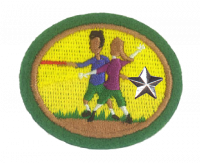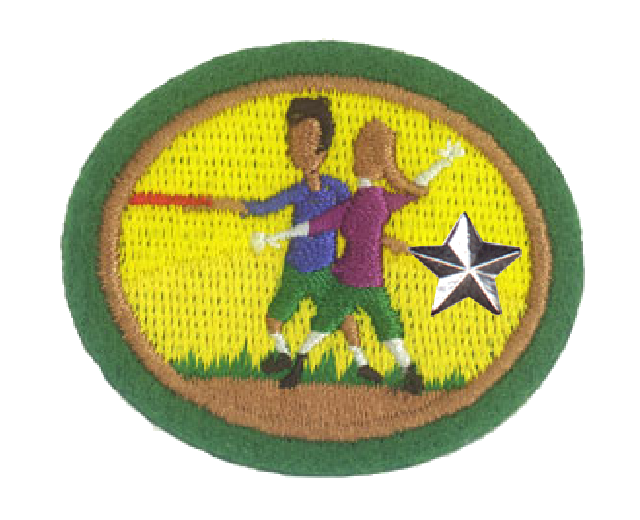AY Honor Ultimate Disc - Advanced Answer Key
Skill Level
2
Year
2011
Version
01.12.2025
Approval authority
General Conference
1
For tips and instruction see Ultimate Disc.
2
For complete USA Ultimate rules, visit usaultimate.org
3
Offensive Positions: (1) Handler & (2) Cutter
Depending on the style of offense, there will be 2-3 handlers and the rest of the players on the field will be cutters. Player responsibilities may change between points before the pull or mid-point (usually after a timeout).
Offensive Formations: Stacks
Vertical Stack:
Horizontal Stack:
Defensive Formation:
If a team is starting the point on defense: the team captain on the field will indicate the type of defense, the force (home/away), and offensive handlers for the stack if the disc is turned over. The defense cannot call a timeout and must adjust defense as the point progresses.
If a team is starting on offense: in the event of a turnover, the default defense is to now guard whichever player was guarding you on offense in a Person Defense system. If the defense was in a zone defense on a turn where no specific person was guarding you, guard the closest player and communicate with your team to set up an effective defense.
Person Defense: Sometimes called "man-to-man", person defense requires each player to guard an offensive player for the duration of the point, attempting to keep that player from making a play on the disk or marking a handler to prevent certain throws. This is the most common and "default" defense in most leagues. In mixed-gender games, matching should be same-gender where possible (some leagues require gender ratios on the field).
Starting the point on defense, the team captain on the field will have the players "count off" one through seven the offensive players left-to-right to determine who will guard which player.
Zone Defense:
Helpful Info:
Mark/Marking: A "mark" is the guarding defensive player within 10 feet against the offensive player with the disc. Only the marker can initiate and continue a stall count. The mark will typically force a handler to throw the disc to one side of the field, effectively cutting off the openness of one side of the field and all offensive players on that side. For an effective defense, a marker will continue a force to a side of the field and reach to the middle inhibiting those throws without "breaking the mark" or "break" by the pivot movements of the handler to allow a break-side (non-force side) throw. A mark should call "up" if the disc has been thrown to alert the defense and "broken" if the hander was able to release a throw. Some situations may require a "no big" situation to prevent a deep downfield throw, the mark will switch to a middle marking block to prevent that throw and shift back to continue the force.
Defensive Force (Home/Away): A force is a defensive strategy to narrow the field for the offense creating situations where an errant throw or the catch may be contested for an interception or turnover. A force is made to either sideline and is called "home" or "away". A home force is to the team's sideline (or where the team's gear is located) and an away force is to the opposing team's sideline (or opposite sideline). A force will typically continue in the same direction, attempting to trap the offense on one side of the field, throughout the entire point unless changed by a team captain. Most often, a force will be set up causing the offense to only be able to throw forehand (for right-handed players) throws as these throws are typically more difficult and not as powerful as backhanded throws. However, switching to a backhand force at the beginning of a point/turnover can confuse the offense and prevent players who excel at forehand throws. Additionally if a turn occurs out of bounds, trapping a handler on the sideline--regardless of force--can prevent more throws by the handler. Otherwise, guard from the sideline to the middle with the mark.
Break:
After a Timeout:
4
4a
4b
4c
5
5a
5b
5c
6
7
7a
7b
7c
7d
7e
7f
8
8a
8b
8c
8d
9
10
11


